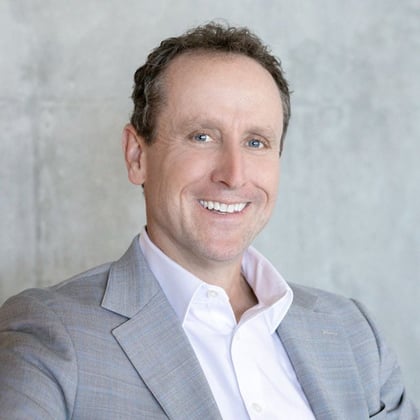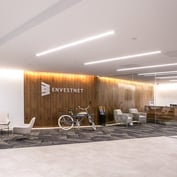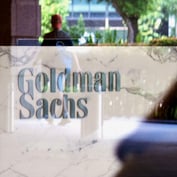It’s been just shy of one year since Mike Durbin, the former head of Fidelity Institutional, became CEO of Cetera Holdings.
Marking the occasion, he told ThinkAdvisor in a recent interview that the firm was enjoying “tremendous momentum” following some big-ticket acquisitions and its year-end 2023 recapitalization via its private equity owner, Genstar Capital.
When Durbin took on the job in May 2023, Cetera Financial Group had some 8,000 financial professionals who oversaw about $330 billion in assets under administration and $116 billion in assets under management. Today, the firm boasts some 12,000 advisors across its five affiliation channels, and the asset pool has grown significantly, with over $500 billion of AUA and $200 billion of AUM.
Durbin said the first year as CEO has been equal parts fulfilling and challenging, especially when it comes to mastering the distinct parts of the business and balancing the goals of high organic and inorganic growth. He also pointed to his strong conviction that Cetera’s position in the marketplace is enviable, with impressive recruiting results, diverse affiliation models and strategic backing from Genstar.
Cetera will continue its acquisition push this year, Durbin recounted in the interview, but the focus is also on helping its advisor force grow books of business the old-fashioned way — by winning more clients and offering more services to those already working with the firm. In the end, Durbin emphasized, it’s a great time to be in the financial advisory business, but firm leaders need to remain diligent and committed to ongoing innovation.
Here are highlights of our conversation:
THINKADVISOR: Can you give us an update on how your first year at the head of Cetera Holdings has gone? Any big surprises?
Mike Durbin: Marking the occasion is actually one of the reasons why I’m here in New York City today — about two weeks shy of the one-year anniversary. The last year has been a dynamic one. It was a year that was M&A heavy, but that comes with the territory, because Cetera has been a serial acquirer since long before I came onboard.
Last year there were two categories of acquisitions, and that’s been similar over time. Examples like Securian and Avantax, those are what we think of as “scale” acquisitions. We know the business model, and we are able to directly add scale against our existing channels and community architecture.
The second category is more about acquiring our way into new capabilities that we didn’t have before. An example of this would be the acquisition of the Retirement Planning Group. They represented at RIA acquisition that gives us a full fee, fiduciary, W-2 employee model firm that we have pretty aggressive strategic plans for. It’s a new capability set for us.
So, it was really a growth year for us. We’ve grown to surpass 12,000 advisors. We just recently crossed $500 billion of total client assets, including $200 billion in assets under management. That’s a terrific year of growth.
The M&A activity grabs the headlines, but the focus remains on organic growth. We are helping the advisors that we already have continue to grow.
How is the integration effort going with respect to Securian and Avantax, in particular?
The Securian deal is an interesting one because we actually did what is called an asset purchase — not an equity purchase. We effectively bought the right to recruit all 900 of their advisors and bring their books of business over to us. So, after the deal closed, the first few weekends of transitions were incredibly efficient.
There was still a transition period for the advisors, to be sure, but we aimed to minimize disruption and move advisors as seamlessly as possible to the Cetera entity and clearing platform with Pershing.
With Avantax, it was an equity purchase, and it’s a bigger organization. We bought the whole company and it was delisted. As we discussed at the time, what we really liked was seeing the scaled relationship with Fidelity as a clearing firm.
We like the strategic optionality of having Pershing, Fidelity, Schwab and our own self-clearing and custody capabilities. It helps us with the maximum addressable market for recruiting and ongoing M&A.
However, the integration pathway has been a light touch for Avantax so far. We’ve retained their leader, Todd Mackay, and if you’re an Avantax advisor, it hasn’t been a big disruption. We plan to keep a light touch there, and we don’t want to disrupt their business. We like the optionality.
What it also means is that we now have a scaled relationship with Fidelity. That’s a big deal across all of our channels as they are out there in market recruiting or doing small tuck-in acquisitions. If we come across a piece of business that sits with Fidelity Clearing and Custody, we have a destination already prepared for them. Strategically, that’s quite important for us.
Avantax was a big acquisition by historic standards for Cetera, but that means the Fidelity relationship is immediately at serious scale. That’s the kind of thing that can really help to sway an advisor as they choose their destination.
What has the response been like to the Cetera Growth Guarantee?
It’s been received very well by advisors and recruiters. We stand behind the efficacy of our growth program, and that’s where the courage to make the guarantee comes from. We aren’t shy about the fact that we are working to carve out a spot in this marketplace to be known as a reliable growth partner. Advisors who affiliate with us will grow faster. That’s our mission.
The guarantee isn’t based on one single solution. It’s about all the resources we can bring to bear, from tech tools to hands-on professional practice management support that really helps advisors grow. I am confident that we are creating a long-term, sustainable differentiator here at Cetera. We’re putting our money where our mouth is on that.
Is it safe to assume the multi-affiliation model is here to stay?









 May 02, 2024 at 10:19 AM
May 02, 2024 at 10:19 AM











